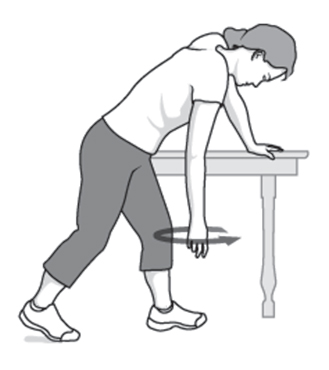Shoulder Injury Rehabilitation
The single fastest easy and best way to recover from shoulder injury:
Before any solutions for shoulder rehab, is important that we discussed the full shoulder anatomy and important regions we will target for recovery. The single fastest easy and best way to recover from shoulder injury. Is outlined below, but I wanted highlight some basic rules from shoulder recovery. I recovered from a shoulder injury, doing my own rehabilitation. I have been blessed enough to produce enough strength through my shoulder region, than I am back to training for Brazilian Jiu jitsu tournaments, swim racing and other activities. It’s good to say also that the shoulder is the most flexible bone in the body. We can rotate our arm in full circle. We can throw a baseball or football, serve a tennis ball, swim the free style etc. People who hurt their shoulder quickly discover how limited, and frustrating life can be without a properly functioning shoulder. So let’s start with your free lesson today!.
Overuse Shoulder problems tip-offs to trouble
An overuse problems can actually arise from underuse. This can happen when, for whatever reasons , you fail to use your shoulder in a normal fashion. Having your arm in a sling for an elbow or wrist injury is one example. Another is after surgery on the arm or even the chest (women my develop shoulder problems following breast surgery, either from cancer or cosmetics). A period even of a few weeks of reluctance to move the shoulder –for fear of chest wall pain or of disrupting a surgical incision -is enough to make the shoulder weak enough to be prone to overuse injuries.
Testing for injuries:
Usually the first thing that goes when you start having shoulder problems is the ability to bring your arm up from the side comfortably . The shoulder joint itself is only involved in this motion for the first 85 degrees or so—That’s all the flexibility you have there. For the remaining 100 degrees or more that your arm can normally navigate, you are dependent of movement from the rest of your shoulder assembly —your shoulder blade slides up a good three or four inches as you continue to raise your arm. You can watch this in the mirror. Put hand on top of your shoulder as you raise your arm and feel those relationship. They don’t change. Every time you raise your arm, your shoulder girdle, as it’s called, will start move as your arm comes straight out from your body. You can see your shoulder blade, and the rest of the assembly , slide up as you continue to raise your arm.
Understanding the shoulder:
The shoulder is actually two distinct anatomical structures: The shoulder girdle and the shoulder joint. The shoulder girdle consist of the clavicle and scapula bones, whereas the shoulder joint is formed by the scapula and the humerus bone. The primary function of the shoulder girdle is to position itself to accommodate movements of the shoulder joint.
Bones of the shoulder girdle:
Two bones make up the structure known as the shoulder girdle : the clavicle and the scapula. The clavicle is a long slender s shape bone that attaches to the sternum (breastbone) at the medial end and to the scapula at the lateral end. The clavicle is often referred as the collarbone. It is the only bonny attachment that the upper extremety has to the trunk. Because of its shape the fact that it is held in place at either end by strong, unyielding ligaments, and that fact that it has little protection from external forces (with exception of skin), the clavicle is an often fracture bone.
4 EXERCISES TO RESTORE SHOULDER MOBILITY:

1-Circles: Bend over waist and let the arm in your injured side hang in front of you. Then start swinging in a clockwise motion: no too hard or too fast-it’s not like stirring a vat of molasses. Use just enough strenght to kick your arm into motion and slowly keep swinging it.

2-Sawing exercises. Stand up straight. Pretend you are on one end of a double handled saw, and start sawing. Back and forth, in and out., way out and way back. As with all these exercises the more repetitions you do , the more your range of motion will increase. You are stretching at the same time as you are strenghtening. The exercises also puts your elbow through a complete range of motion.

3-Abductions swings. Let your arm fall straight down to your side. Then raise your arm up at right angles to your body and let it back down, up and down, as though you are slowly flapping an injured wing. Raise your arm to a comfortable level only. Even if you can only bring your arm up a foot or two from your side to start with , keep at it, as you continue, you’ll become more flexible. If it hurts too much to swing your arm up at all, start out by bending your elbow to form a chicken wing.Then flap it as far as it is comfortable. As you develop flexibility that way, gradually straighten out.

4-Shrug your shoulders. While at the top of the shrug pull your shoulders back and your shoulder blades together as though you are trying to squeeze a tennis ball between them. Also you can roll your shoulders up and forward then down or up and back then down making clockwise and counterclockwise circles.
Frequency:
You should try these exercises in sets of 10 repetitions each, for 3 sets each in a period of 5 weeks. If pain persists, see a Doctor. Don’t forget to check our sports conditioning section on our sister website, by clicking here!
PS-Check our last story: how much flexibility you lose after 40
0
